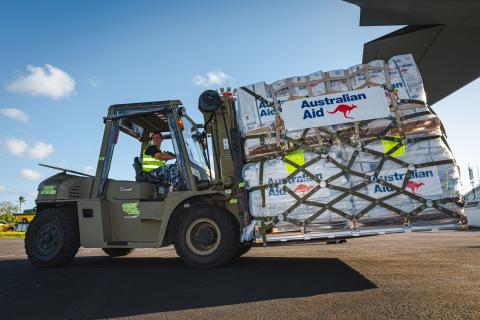Yet again, Australia’s federal budget has been disappointing when it comes to the proportion of aid to poorer countries. However, to paraphrase John F Kennedy, perhaps we should ask not what our country can do for others, but what we can do for them.
We have seen more than a decade’s lack of ambition by Australian governments with regard to foreign aid. Official Development Assistance (ODA) has fallen to less than 0.2% of Gross National Income (GNI), taking us from 13th to 26th amongst the 31 nations that comprise the Organisation for Economic Cooperation and Development. Last week’s budget does nothing to remedy the situation, with the aid/GNI ratio projected to continue to fall, from the current 0.19% to as low as 0.14% by 2035–36.
However, many would say such giving is up to individuals not governments. Yet only 56% of Australian citizens claim to donate to charity, according to the 2023 World Giving Index. This ranks the Australian public 19th, behind the population in less fortunate countries such as Indonesia and Myanmar. More telling is the figure for making and claiming tax-deductible donations, which is less than 28%, the lowest figure seen since the 1970s.
As for whether we can afford to do more, Australia is ranked equal 5th in the world by the UN’s Human Development Index (HDI), which is based on life expectancy, years of education and GNI per capita.
But why should governments or individuals care about helping others?
Giving by the Australian government can be seen from the perspective of geo-political competition with other nations for influence, such as with China in the Pacific. Some of the other reasons people use for giving are moral obligations, a sense of well-being and social cohesion.
The options for those who want to give have expanded in recent years beyond charitable donations.
When individuals donate to a cause they believe in, they can also inspire others to do the same. One of the best examples of this is The Giving Pledge, a charitable campaign founded by Bill Gates and Warren Buffett, to encourage wealthy people to contribute at least half of their wealth to philanthropic causes. However, while The Pledge has 240 signatories from 29 countries, mining magnate Andrew Forrest is the only Australian to sign up.
Another, more hard-headed reason to give is the impact donations can have. A new book Best Things First by Bjorn Lomborg, a Swedish economist who founded the Copenhagen Consensus that focuses on cost-effective solutions to the world’s biggest challenges, highlights 12 development programs. Lomborg shows that these interventions, such as expanding childhood immunisation, improving education and boosting trade, can deliver a massive return on investment, averaging $US52 in social benefits for every dollar spent.
The options for those who want to give have expanded in recent years beyond charitable donations.
For the last decade or so, it has been possible to set up a Private Ancillary Fund (PAF). A PAF is a charitable trust designed to provide individuals, families or associations with an investment structure for philanthropic purposes. Contributions to a PAF are tax deductible, even though only 5% of the market value of the fund’s net assets must be donated each year, and any capital gains in the PAF’s assets are not taxed.
Impact investing is another way to provide development assistance that has emerged recently. It allows people and foundations to contribute to businesses and projects that aim to generate both financial returns and measurable social or environmental benefits, in a mix chosen by the investor. According to the Global Impact Investing Network, the total market for impact investing had grown to US$1.2 trillion by 2022, a 12-fold increase in just five years. Impact investment facilities now seek solutions to many pressing global issues, such as climate change, education, access to finance and healthcare.
There is certainly a need for more and better ways to support international development. Over 108 million people were displaced in the world at the end of 2022, the highest number since the Second World War. Around 700 million people live in extreme poverty, a figure which has increased in recent years.
A UN-backed study published in March projects that post-war reconstruction and recovery in Ukraine will cost $US486 billion (A$750 billion). That alone equals more than two years of ODA from all developed countries, which totalled US$224 billion in 2023. So, those wishing to have an impact can now pursue a dual-pronged approach, combining traditional, tax efficient giving with impact investing. This allows individuals to maximise their positive influence on global challenges, while receiving a financial return from any related investments they make. Sounds like a win-win to me.

